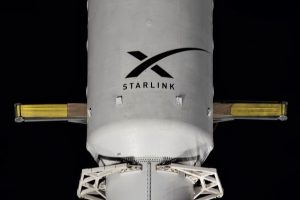- 🌪️ Starlink’s potential in disaster recovery has been highlighted by its use after Hurricane Helene.
- 🛰️ Elon Musk claims the Starlink deal with the US could have cost much less without added government requirements.
- 💰 Originally, a $885.5 million grant was awarded to SpaceX for providing internet to underserved areas, later revoked by the FCC.
- 🌐 Each Starlink kit could have been cheaper, potentially saving significant costs for the government.
- 🚀 The FCC noted the need for competition in the satellite internet market, as Starlink dominates with a large satellite footprint.
- 🏗️ The government is now investing over $42 billion in providing fiber internet, with high expenses per location.
In a rapidly evolving digital landscape, Starlink has emerged as a beacon of innovation, poised to redefine how we approach global internet connectivity, particularly in disaster-stricken regions. This innovative satellite network, spearheaded by tech mogul Elon Musk, offers substantial implications for both disaster recovery and broader infrastructure development. This blog post delves into Starlink’s potential, the cost dynamics surrounding its deals, and the implications of FCC decisions on the landscape of U.S. internet connectivity.
Starlink’s Pivotal Role in Disaster Recovery
In the wake of natural disasters like Hurricane Helene, Starlink has demonstrated its critical utility in disaster management. The severance of traditional communication lines during such events underscores the necessity for alternative systems. Starlink, with its advanced satellite technology, has provided crucial internet connectivity to areas left incommunicado, thereby facilitating coordination and enhancing response efforts.
- FEMA and Starlink Collaboration: In recent instances, organizations like FEMA have leveraged Starlink to restore connectivity in disaster-struck areas, proving its worth in real-time applications.
- Starlink Kits Deployment: The deployment of these satellite kits underscores the need for rapid, reliable communication systems to bolster disaster response teams and affected populations.
The Starlink Deal: Cost Dynamics and Government Requirements
While the promise of Starlink is evident, its application has not been devoid of administrative challenges. Elon Musk has been vocal about the financial implications related to government-imposed requirements in their Starlink deal with the United States.
The Revoked Grant
Initially, SpaceX was awarded an $885.5 million grant from the FCC to extend internet access to underserved areas across the United States. However, this grant was rescinded, leading to questions about fiscal efficiency and the return on investment for both parties.
- Government Requirements: Musk cited unnecessary government stipulations that inflated costs without adding value, suggesting streamlined processes could reduce expenses significantly.
- Cost-Effective Alternatives: Had the agreement proceeded as intended, it’s anticipated that Starlink could have offered a more cost-effective solution compared to current government spending on fiber infrastructure—a staggering $42 billion.
FCC’s Strategic Decision and Market Competition
The FCC’s decision to revoke SpaceX’s grant highlights a broader narrative on market competition and monopolistic concerns within the satellite internet sector.
- Satellite Dominance: With Starlink holding a considerable portion of operational satellites, the FCC has expressed the need for more competition to prevent a monopoly and encourage innovation.
- Infrastructure Investment: Meanwhile, the decision has pushed the government towards fiber internet investments, with varying cost implications across different regions, driving discussions around broadband equity and access.
Navigating the Future of Internet Connectivity
As we look to the future, the interplay between commercial innovations like Starlink and regulatory bodies becomes a focal point for how we conceptualize and implement internet infrastructure.
- Policy Implications: Navigating these waters requires careful policy-making that balances innovation with equitable access, while also ensuring sustainable market competition.
- Technology and Resilience: The integration of satellite technology into disaster recovery emphasizes the importance of resilient infrastructure in mitigating the impacts of climate change and natural disasters.
In conclusion, Starlink stands as a testament to the transformative potential of technology in addressing some of today’s most pressing challenges. Its role in both disaster scenarios and broader infrastructural development continues to offer valuable lessons and opportunities for policy reform, technological advancement, and enhanced global connectivity.





